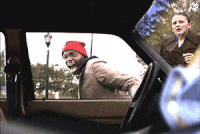
It seems like this has been a hotter and longer summer than usual. That is probably because we went into a summer pattern starting in May with no let up through June and at least into mid-July. It has been so hot that, in the U.S., more people have died from being left in hot cars than from lightning strikes so far this year.  Twenty-four children have died from vehicular heatstroke since the beginning of the year, according to noheatstroke.org, which is run by a member of San Jose State University’s Department of Meteorology and Climate Science In comparison, fatalities due to lightning strikes in 2018 stand at 13 as of Sunday morning, July 15, according to the National Weather Service. The hot car deaths so far this year have occurred in 16 different states, with most of them taking place in the southern U.S.
Twenty-four children have died from vehicular heatstroke since the beginning of the year, according to noheatstroke.org, which is run by a member of San Jose State University’s Department of Meteorology and Climate Science In comparison, fatalities due to lightning strikes in 2018 stand at 13 as of Sunday morning, July 15, according to the National Weather Service. The hot car deaths so far this year have occurred in 16 different states, with most of them taking place in the southern U.S.
On average, 37 children die in hot cars annually, according to advocacy group Kidsandcars.org. The majority of the victims are just 3 years old or younger. “The inside of a car acts like a greenhouse,” according to the NWS. Sunlight shines into a closed  vehicle, heats up the interior and then this heat stays trapped by the glass and can’t escape. This occurs even if the windows are partially cracked open. In as little as 10 minutes, the inside of a car can heat up by 20 degrees Fahrenheit, according to the National Highway Traffic Safety Administration (NHTSA). “A child’s body temperature rises three to five times faster than an adult’s,” the NHTSA said. Thus, when a child or even a pet is left in a closed or partially closed vehicle, their internal temperature can rise to deadly levels in a very short time. One of the main misconceptions is that hot car deaths can only occur in the summer when temperatures are at their highest and the sun’s rays are strongest. While it is true that the number of hot car deaths spikes in the summer months, being in a locked up vehicle can be fatal at any time of year.
vehicle, heats up the interior and then this heat stays trapped by the glass and can’t escape. This occurs even if the windows are partially cracked open. In as little as 10 minutes, the inside of a car can heat up by 20 degrees Fahrenheit, according to the National Highway Traffic Safety Administration (NHTSA). “A child’s body temperature rises three to five times faster than an adult’s,” the NHTSA said. Thus, when a child or even a pet is left in a closed or partially closed vehicle, their internal temperature can rise to deadly levels in a very short time. One of the main misconceptions is that hot car deaths can only occur in the summer when temperatures are at their highest and the sun’s rays are strongest. While it is true that the number of hot car deaths spikes in the summer months, being in a locked up vehicle can be fatal at any time of year.
Hot car deaths are possible even with outside temperatures in the 50s, 60s and 70s. Companies are using various technologies in an effort to lower the number of hot car deaths that occur every year. Waze, a navigational application available on Android and iOS, has a child reminder notification which alerts a driver to check the back seat once the vehicle reaches its destination. The alert can be customized  to receive reminders for more than one child as well as pets. Some General Motor’s vehicles are outfitted with back door sensors that trigger a rear seat reminder once the vehicle is turned off. In Utah, the Primary Children’s Hospital is giving out the Baby Safety Snap, a bright yellow lanyard that you leave in your baby’s car seat and then put around your neck once the baby is in the vehicle. In lieu of these measures, drivers should make it a habit to look in the front and back of their vehicle before locking the doors and walking away. Anyone who sees a child or pet locked up in a vehicle is advised to call 911 right away.
to receive reminders for more than one child as well as pets. Some General Motor’s vehicles are outfitted with back door sensors that trigger a rear seat reminder once the vehicle is turned off. In Utah, the Primary Children’s Hospital is giving out the Baby Safety Snap, a bright yellow lanyard that you leave in your baby’s car seat and then put around your neck once the baby is in the vehicle. In lieu of these measures, drivers should make it a habit to look in the front and back of their vehicle before locking the doors and walking away. Anyone who sees a child or pet locked up in a vehicle is advised to call 911 right away.
 These figures may change a bit as we continue the summer reason. The month of July is the peak month for lightning fatalities in the U.S. Based on the past 10 years, the U.S. averages about 10 fatalities for the month, or about one fatality every three days,” Lightning Safety Specialist for the National Weather Service (NWS), John Jensenius said. Jensenius reported that July is also the peak month for lightning strikes across the U.S. This is likely a combination between the numbers of lightning strikes during the summer months, along with the amount of people outdoors during the summer puts more people in danger. About 20 percent of lightning fatalities are related to activities around the home. Lightning fatality statistics show that people take more chances when they’re closer to home, whether it’s walking to or from a car, doing yard work or simply waiting too long to head inside. Also, if you’re close to your home, that doesn’t mean you’re any less likely to avoid being struck. The sound of thunder should serve as an immediate reminder to head inside. People often wait far too long to get to a safe place when thunderstorms are approaching. Play it safe and remember the saying…”When thunder roars, Go indoors”.
These figures may change a bit as we continue the summer reason. The month of July is the peak month for lightning fatalities in the U.S. Based on the past 10 years, the U.S. averages about 10 fatalities for the month, or about one fatality every three days,” Lightning Safety Specialist for the National Weather Service (NWS), John Jensenius said. Jensenius reported that July is also the peak month for lightning strikes across the U.S. This is likely a combination between the numbers of lightning strikes during the summer months, along with the amount of people outdoors during the summer puts more people in danger. About 20 percent of lightning fatalities are related to activities around the home. Lightning fatality statistics show that people take more chances when they’re closer to home, whether it’s walking to or from a car, doing yard work or simply waiting too long to head inside. Also, if you’re close to your home, that doesn’t mean you’re any less likely to avoid being struck. The sound of thunder should serve as an immediate reminder to head inside. People often wait far too long to get to a safe place when thunderstorms are approaching. Play it safe and remember the saying…”When thunder roars, Go indoors”.






